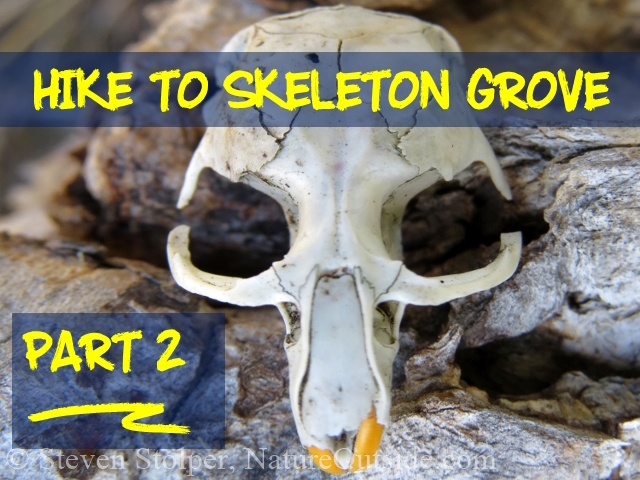
Our intrepid group of animal trackers sets out for a Monterey cypress forest. The trees are on a cliff-top overlooking the northern California coast.
In Part 1, we explore a grassland along the way. We try to read Nature’s newspaper. What animals are about? And what are they doing?
We do this using animal bones. Our goal is to see how much we can learn from the bones we find.
In this article, we explore the forest that I now call Skeleton Grove. I want to share our trip with you so you can see how animal bones can teach us about nature.
A Whole lot of Hunting going On
In part 1, we find amazing Barn Owl pellets. One even has complete skeletons of a tail and a rodent’s hand.
As we make our way through the grassland, we discover more pellets. But these are different. They are smaller than the owl pellets and have a tighter curvature. They’re also filled with insect parts instead of rodent parts.
The diameter of a pellet corresponds with the width of the bird’s esophagus. So the size of a pellet tells you a lot about the bird that produced it. Using the pellet’s size, and the fact that it is filled with insect parts, we deduce that they come from an American kestrel. A kestrel is a small falcon that prowls above grasslands in the United States. And it’s one of the most colorful raptors. Males have a slate-blue head and wings with a rusty-red back and tail.
I love watching kestrels hunt. They often hover by facing into the wind and flapping their wings furiously. It’s thought that the birds can see ultraviolet light. So they can follow trails of urine the voles leave along the ground. These signs help direct kestrels to their next meal.
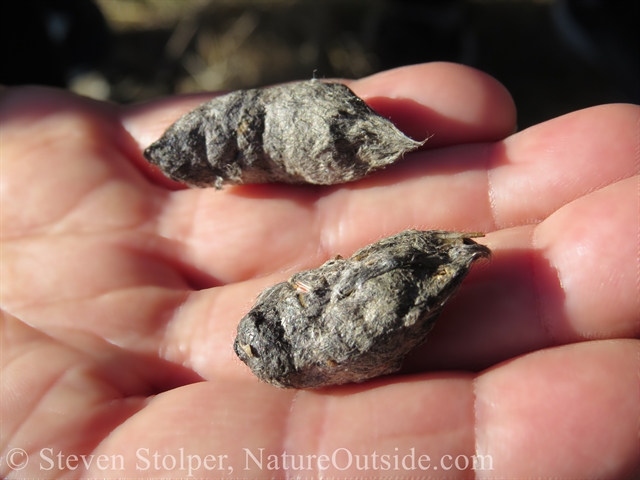
Two small kestrel pellets filled with insect parts.
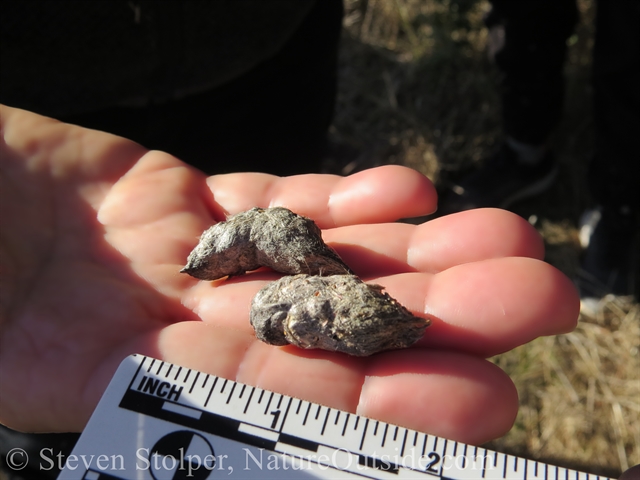
The diameter of a pellet corresponds to the width of the bird’s esophagus. So we can use the dimensions of a pellet to help us discover the type of bird that produced it.
We know that a large population of voles inhabit the grassland. We examined a dead vole in part 1. As we continue to hike toward the forest, we find Bolete mushrooms along a vole run. The teeth marks are unmistakable.
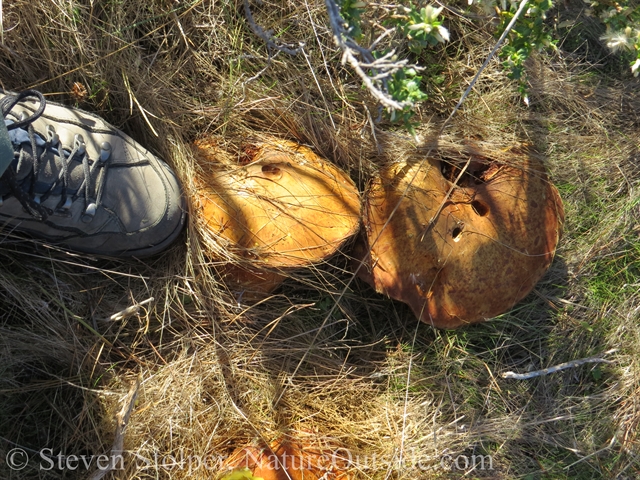
Large Bolete mushrooms along a vole run. I use my hiking boot for scale.
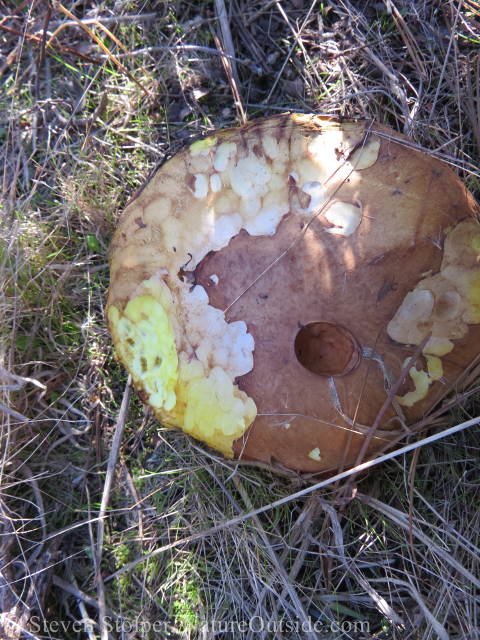
Something has been eating this mushroom.
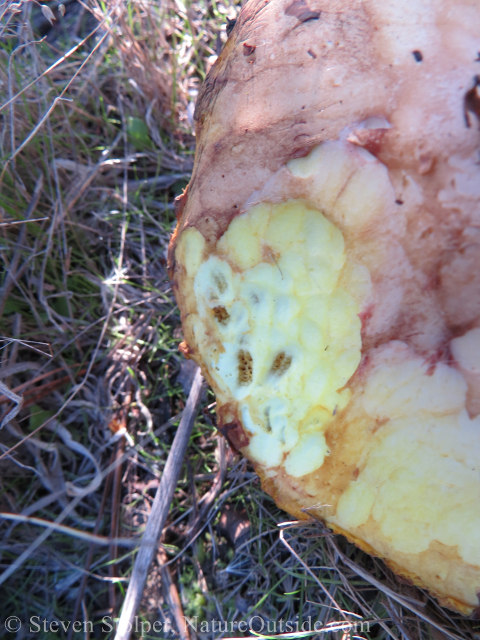
A closer look reveals tooth marks
Skeleton Grove
I’m excited to finally reach the forest. The trees provide a peaceful respite from the hot sun. And we relish the shade as the cool sea breeze stirs the gently swaying branches.
Drawn by its beauty, I amble deeper into the woodland. Brown conifer needles carpet the moist earth.
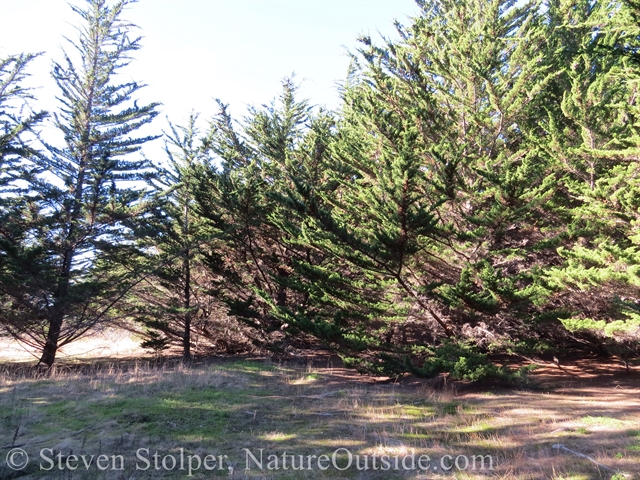
The edge of the cypress forest. The ocean is beyond.
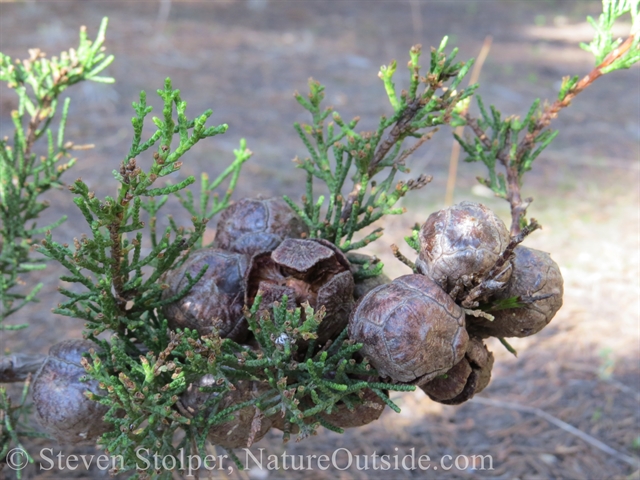
The cypress trees are loaded with their distinctive cones
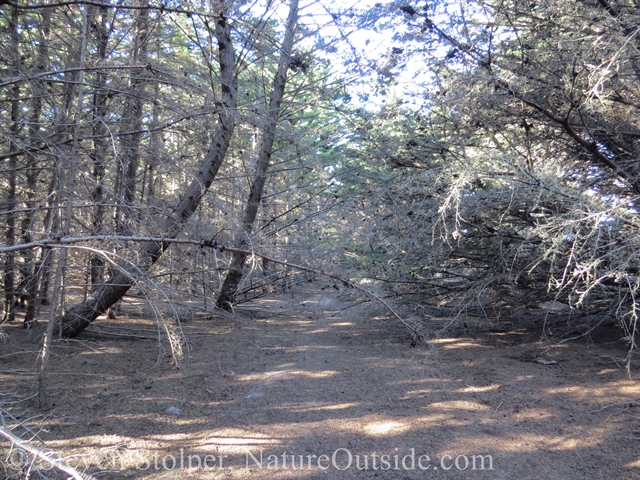
I head deeper into the forest
But there’s more going on than first appears. White specs litter the ground around many of the trees. I stoop under the low hanging branches to have a closer look. They’re animal skulls! Dozens of them! There are so many that some trees seem surrounded with popcorn.
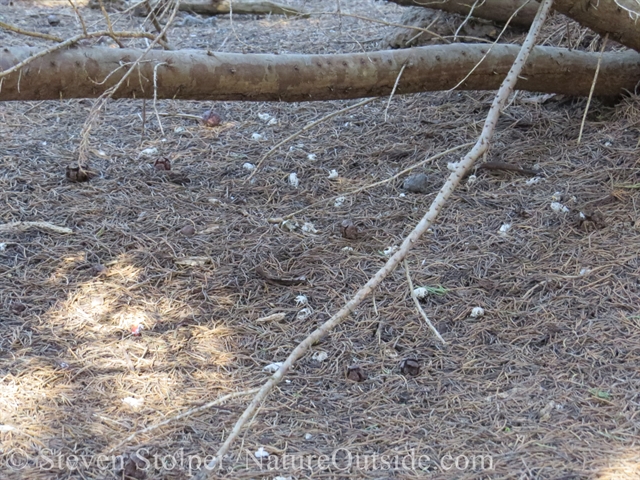
Animal skulls litter the forest floor
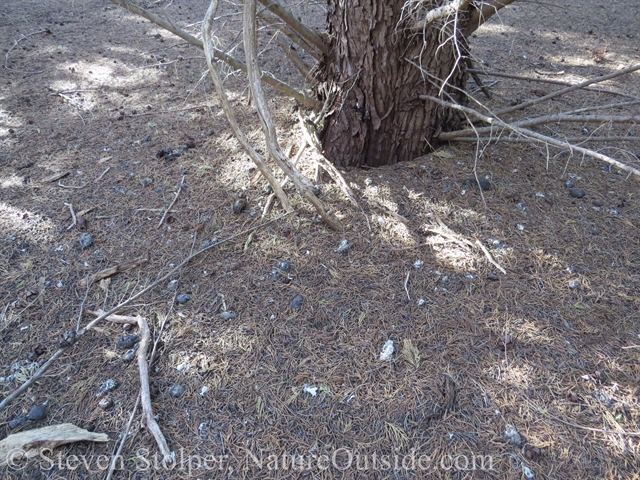
There are raptor pellets, too!
Something’s afoot in this tranquil forest. It’s murder on a grand scale. But who dunnit?
A clue! I find a gorgeous feather on the carpet of cypress needles. It has a barred pattern common to most hawks and owls. And it’s large – almost nine inches long. A primary flight feather, perhaps? I’m not an expert, but I believe it comes from a Red-shouldered hawk.
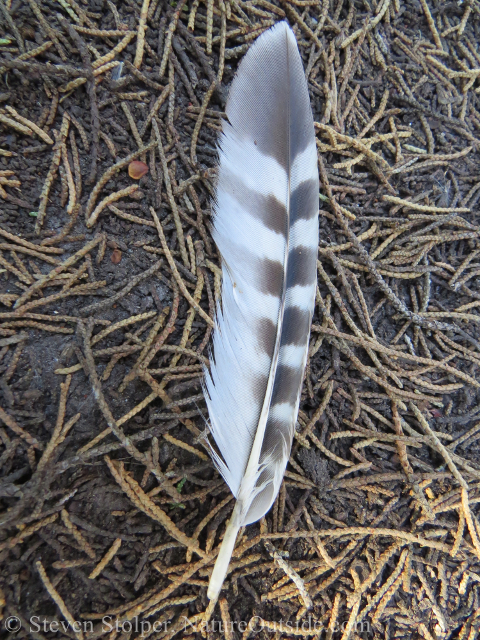
This looks to me like a feather from a Red-shouldered hawk. What do you think?
What do you think? If you have a guess about its owner, leave a comment below to share your thoughts.
The Skull Collection
While I’m examining the feather, the trackers amass a stunning array of skulls and pellets gathered from beneath the trees. One of the trackers feels like “an intruder in someone’s kitchen.” Gopher, rabbit, and vole are well represented. We spend time learning to identify the different skulls.
When you examine a skull, you look at the overall shape, the teeth, and the mandible (jaw). You also scrutinize the rostrum (the front extension of the skull), cranium (the part of the skull that encloses the brain), and zygomatic arches (cheek bones). Using measurements of the skull and the shapes of these bones, you can identify the animal it came from.
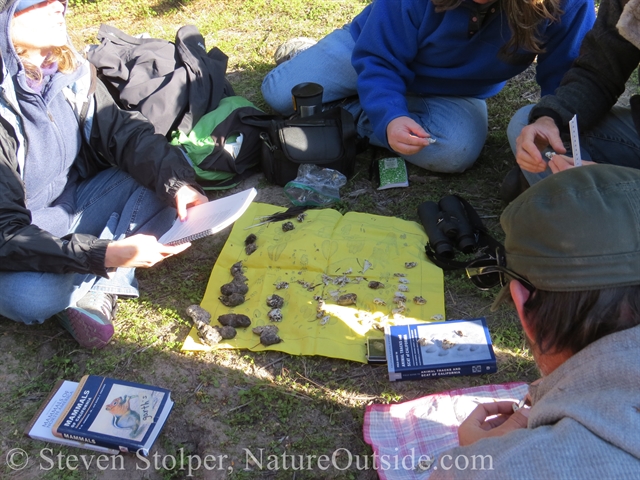
We lay out the skulls, bones, and pellets on a large bandanna
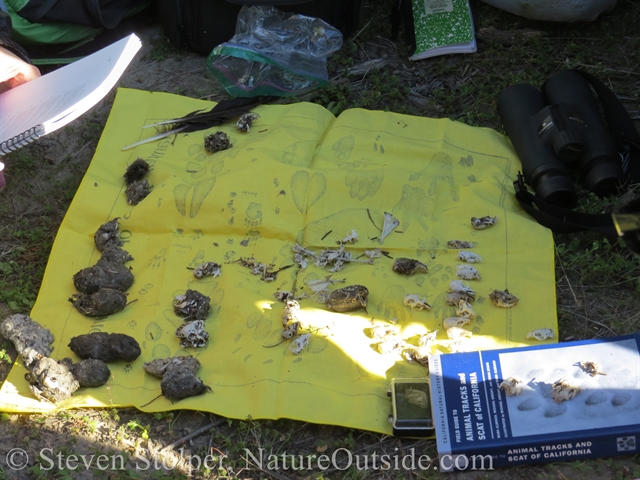
We collect a vast array of skulls and pellets in just a few minutes
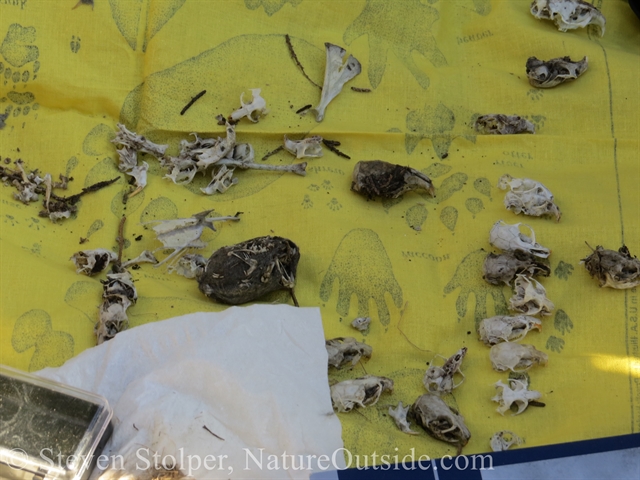
I have never seen such numbers and variety of skulls
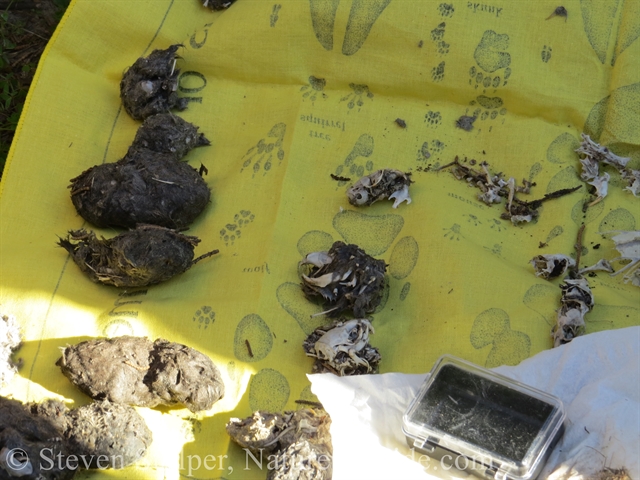
Raptor pellets in different states of decay
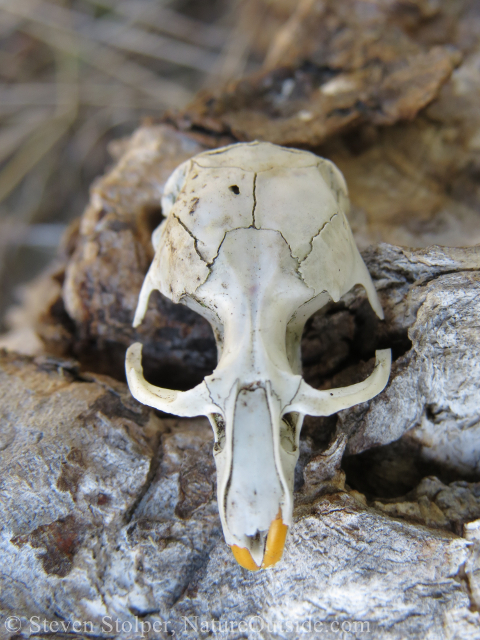
My favorite skull that we found
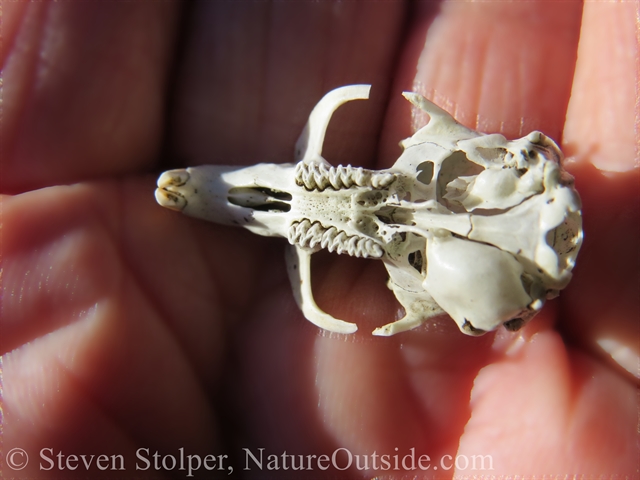
The number of teeth and their arrangement help identify the animal
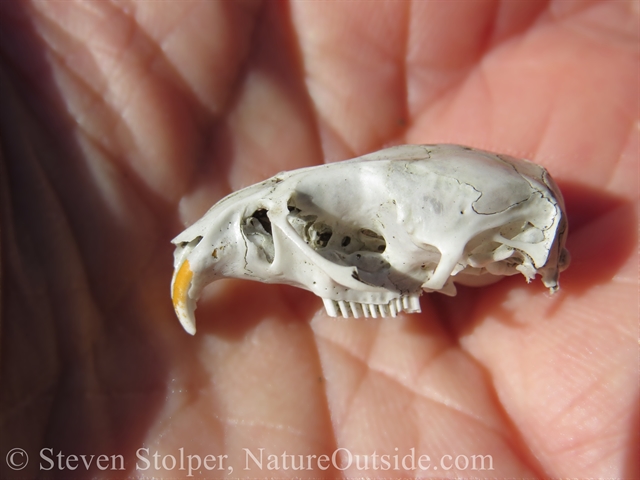
In profile, you can see the shape of the cranium
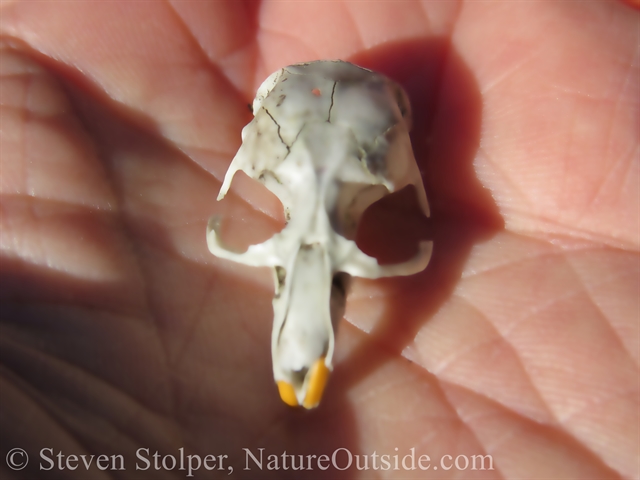
The shape of the zygomatic arches (cheek bones) is another clue to this animal’s identity
The Land Surprises
I push on to the coast-side of the forest. Here are some last photos of this amazing place.
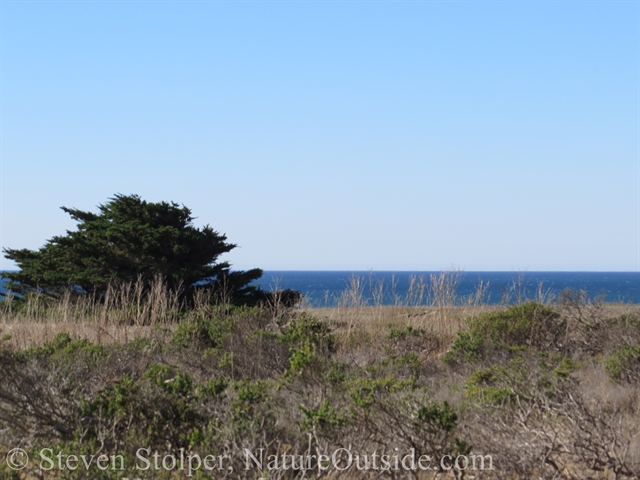
I emerge from the forest. The Pacific Ocean is visible in the distance.
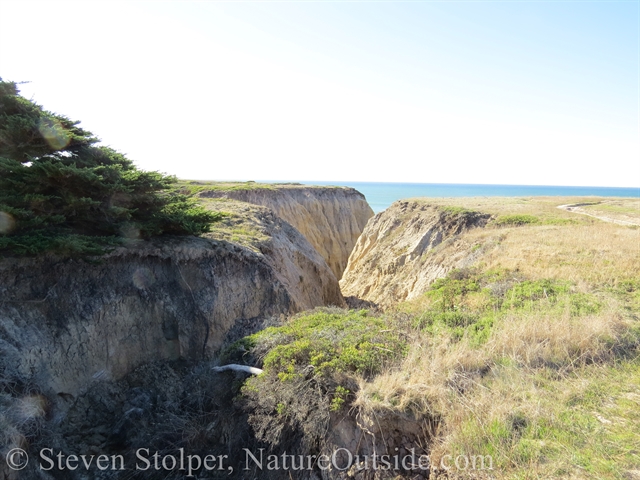
We are on a plateau high above the water
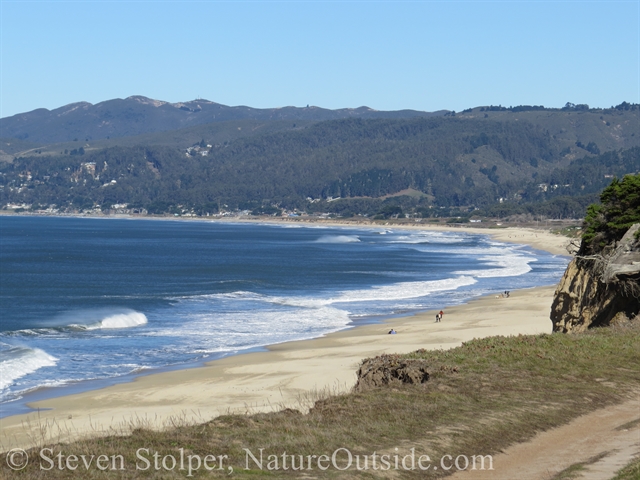
The residents of this area decided to protect this open space from development. I’m glad to be able to enjoy this wonderful place.
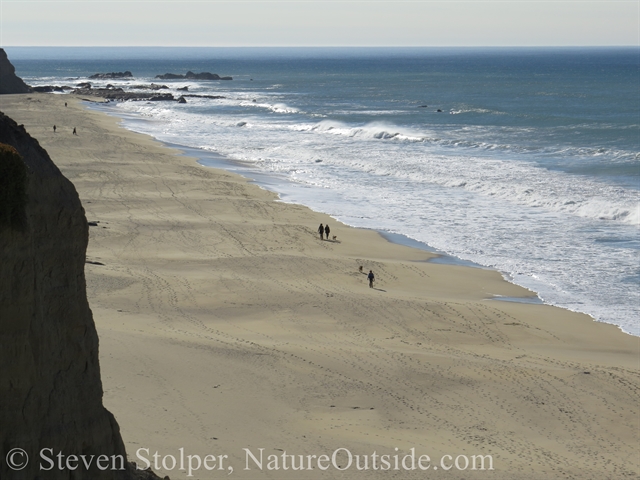
Looking down the beach from the clifftop
When I first saw the preserve from the highway, it did not look like much. But hiking through the grassland and cypress forest revealed the vast numbers of animals that call it home. I’m grateful to the area’s residents who had the foresight to protect this place from real-estate developers who must have been salivating to build along this stretch of coast. It’s especially poignant given the recent actions of the Federal Government in Washington. Here are some of the environmental protections that have been rolled-back in the last six months:
- A rollback of environmental limitations on hydraulic fracturing, or fracking
- Bears Ears National Monument, an expanse of red rock canyons containing Native American sites, was reduced by 85 percent – more than a million acres – and divided into two disconnected parks. (New York Times)
- The National Park Service is considering a price hike for its entrance fees at 17 of its most popular parks. Entrance prices could double and nearly triple. Under the proposal, Grand Canyon, Yosemite, Yellowstone, Zion and other national parks would charge $70 per vehicle – an increase from the current $30 weekly pass. Others could see a steeper increase, with an uptick from the current $25 weekly pass fee. The proposed increase comes on the heels of a recent price hike in the lifetime pass for seniors from $10 to $80. (US News & World Report)
- The government will no longer prosecute energy companies that kill birds protected by the Migratory Bird Treaty Act.
- The tax overhaul bill opened Alaska’s Arctic National Wildlife Refuge to oil and natural gas drilling.
- Protected coastal waters in many states (including my state of California) have been opened for oil drilling.
So look for your local “Skeleton Grove” and take steps to protect it. Your actions are needed to preserve these amazing places for generations to come.
References
The following are affiliate links.
Bird Feathers: A Guide to North American Species
Animal Skulls: A Guide to North American Species
Bird Tracks & Sign : A Guide to North American Species
Related Articles on NatureOutside
Hike to Skeleton Grove (Part 1)
Mountain Lion Tracks – Learn to Read Them
Fox Tracks in a Salt Marsh – Making Plaster Casts
For fun facts and useful tips, join the free Bushcraft Newsletter.



Cool spot! I think that’s a common turkey feather.
Karl, you may be right. Wild turkey primaries have a barred appearance similar to the feather I found. And it could be a smaller turkey, accounting for the smaller size.
The pictures of turkey primary feathers I’ve seen have more dark bars, and the bars are thinner. Unfortunately, I only seem to find tail feathers when I hike. But now you’ve got me thinking…
Hello! I am wishing to find bones where you hiked, what is the location that you hiked at?
Cherub, to keep the landscape in its natural state, we don’t advertise the locations where we find animals or their remains. Unfortunately, many people would poach or collect the animals we find. If you would like to visit this site, I suggest you go tracking with the Bay Area Tracking Club (https://www.facebook.com/groups/654733894647836).